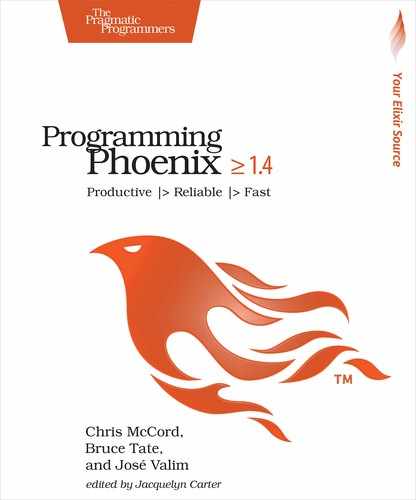Wrapping Up
We packed a ton into this chapter. Let’s summarize what you’ve done:
-
We created our first context that encapsulates all of the logic related to account management.
-
We created actions, which serve as the main point of control for each request.
-
We created views, which exist to render templates.
-
We created templates, which generate HTML for our users.
-
We employed helpers, which are simple Phoenix functions used in templates.
-
We used layouts, which are HTML templates that embed an action’s HTML.
In the next chapter, we’re going to go back to the context, which we’ve implemented with a simple in-memory list, with a database backend using Ecto. By the time we’re done, we’ll be reading our users from the database and entering new users with forms. Along the way, we’ll start to see how a little upfront design effort with contexts paves the way for our growing feature set.
Don’t stop now! Things are just getting interesting.
